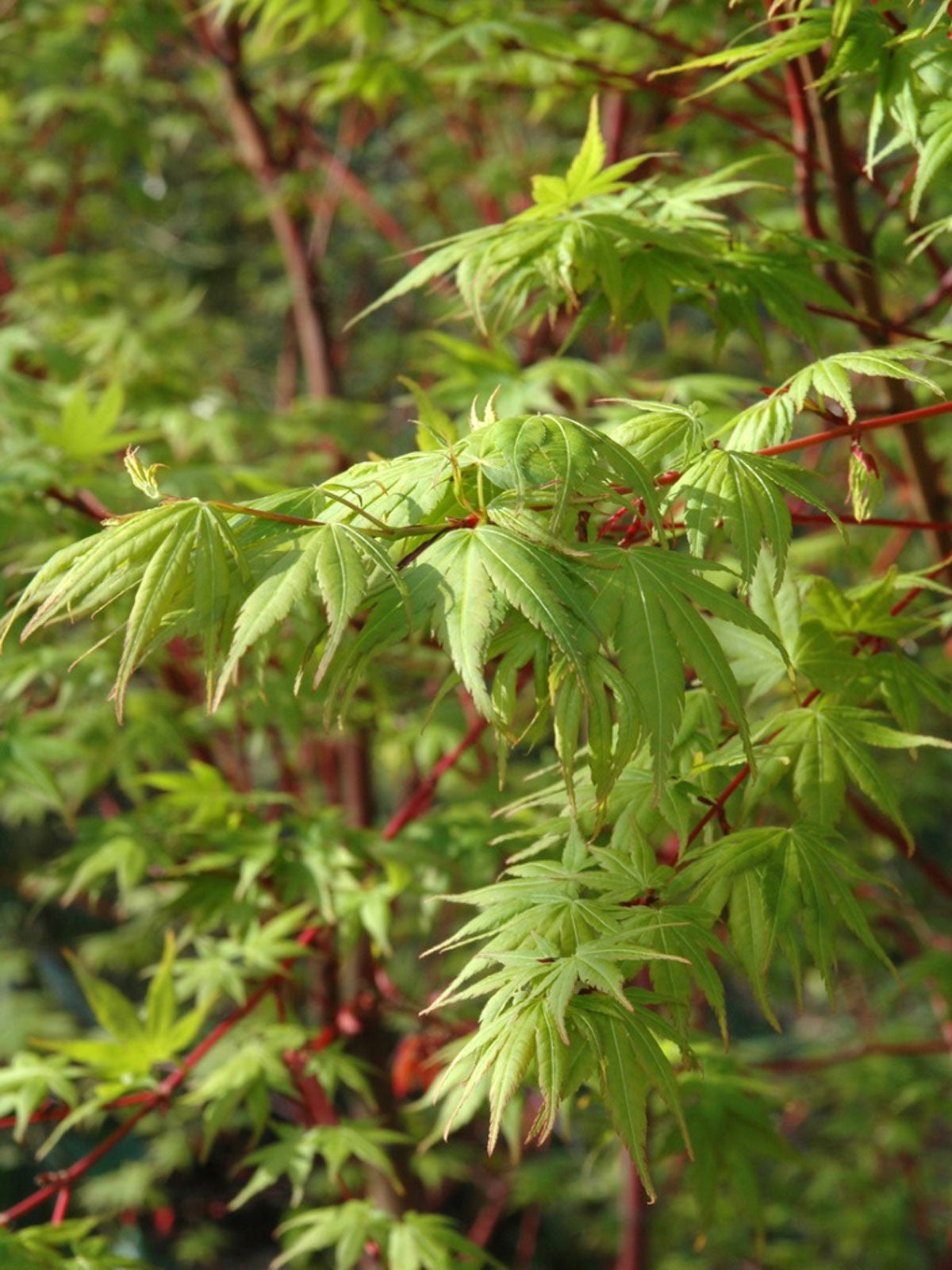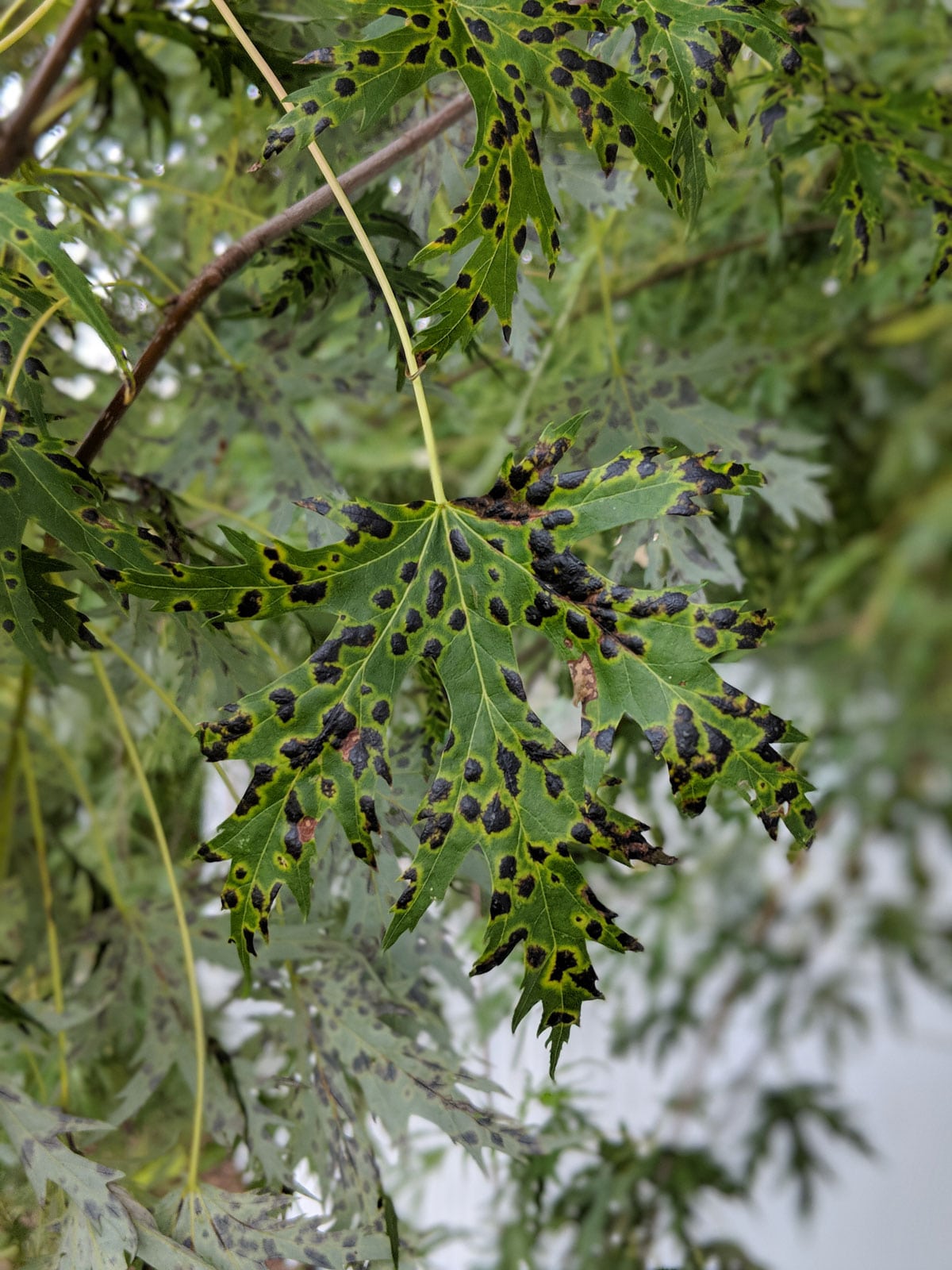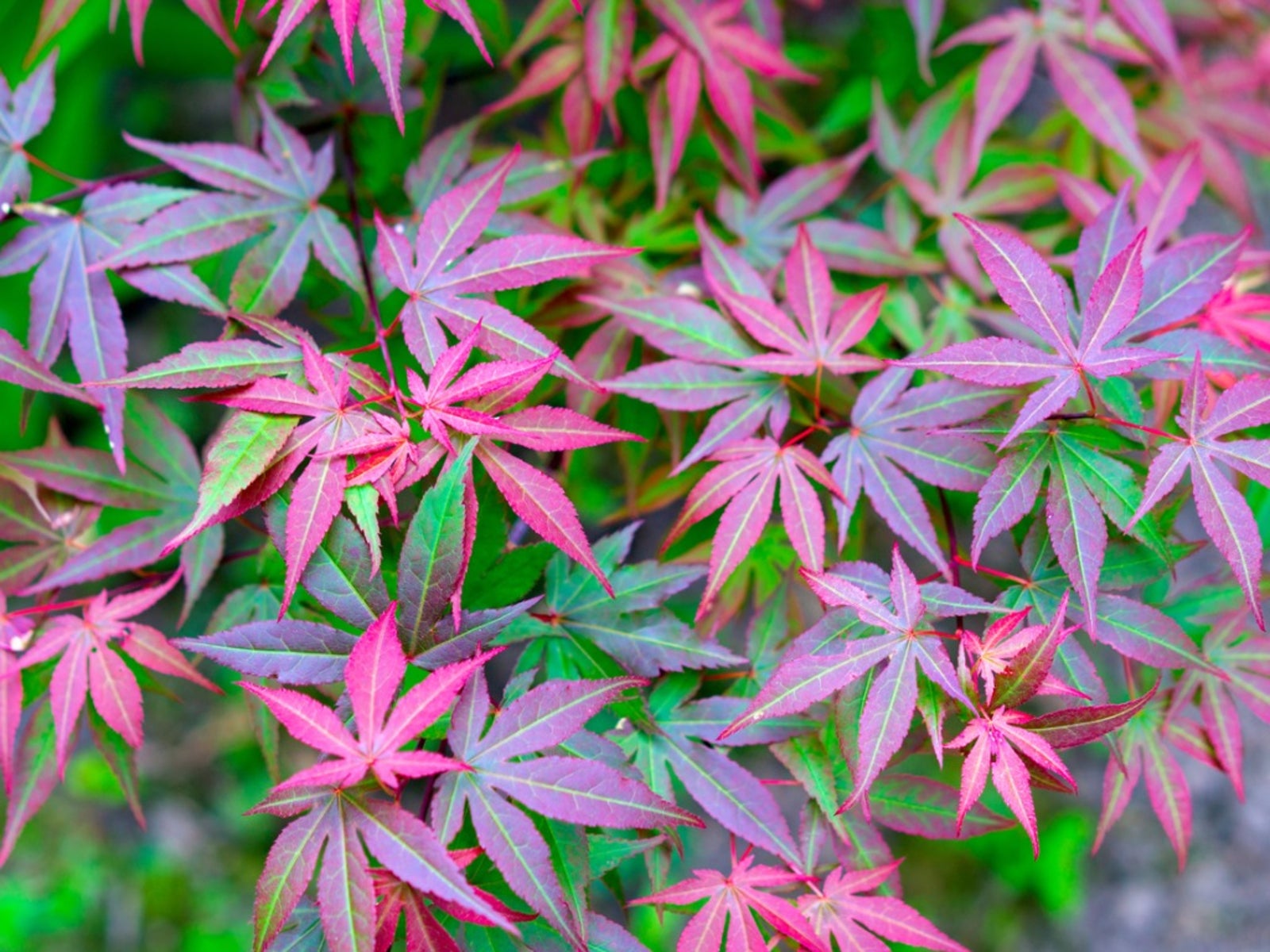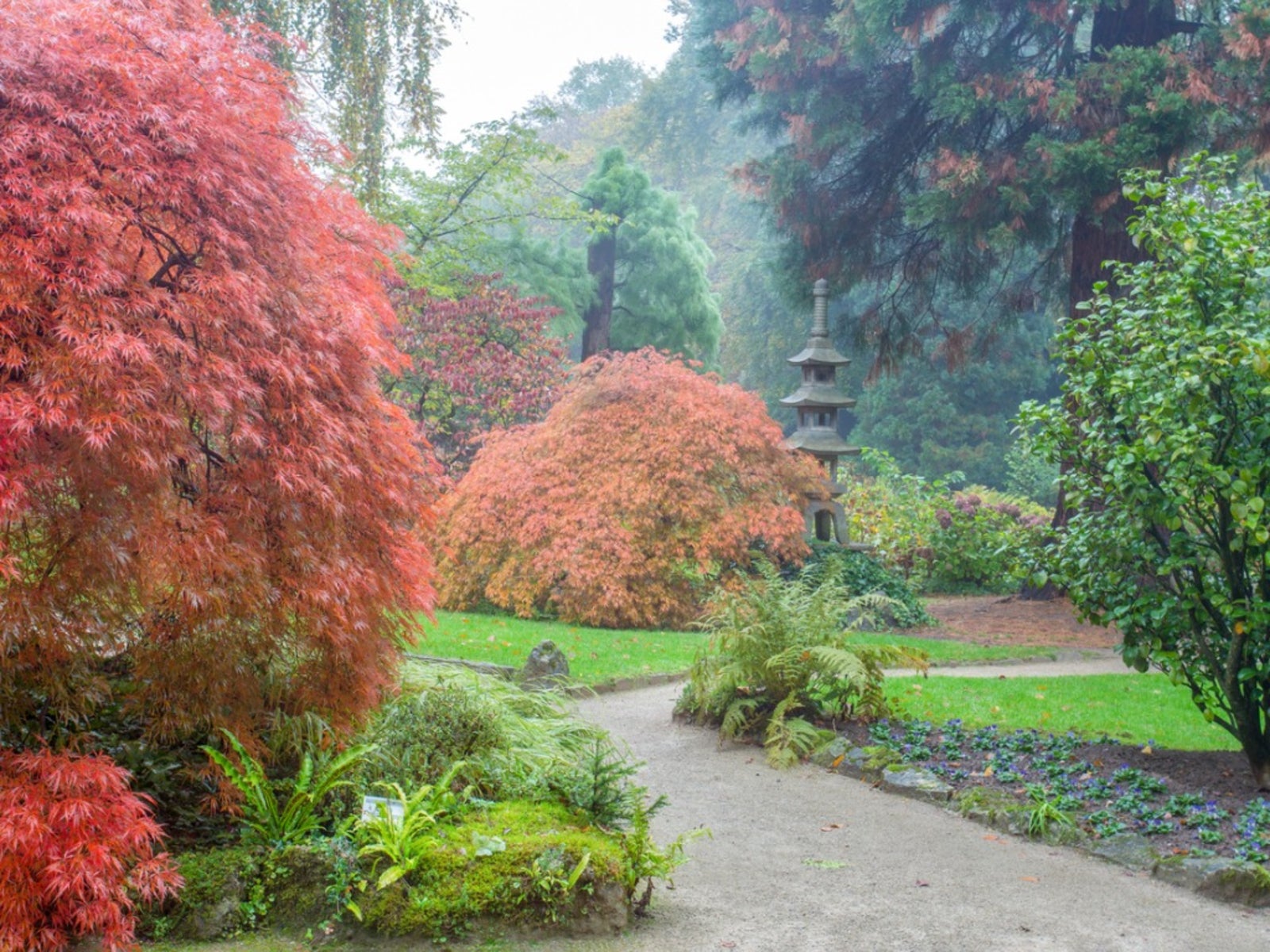Coral Bark Maple Trees: Tips On Planting Coral Bark Japanese Maples


Snow covers the landscape, the sky above stark, with naked trees gray and bleak. When winter is here and it seems that all the color has been drained from the earth, it can get pretty depressing for a gardener. Just when you think you can't stand this depressing view any longer, your eyes fall upon a leafless tree whose bark seems to glow in a reddish pink color. You rub your eyes, thinking winter has finally driven you mad and now you're hallucinating red trees. When you look again, however, the red tree still sticks out brightly from the snowy backdrop. Read on for some coral bark tree information.
About Coral Bark Maple Trees
Coral bark maple trees (Acer palmatum ‘Sango-kaku’) are Japanese maples with four seasons of interest in the landscape. In spring, its seven-lobed, simple, palmate leaves open in a bright, lime green or chartreuse color. As spring turns to summer, these leaves turn a deeper green. In autumn, the foliage turns golden yellow and orange. As the foliage drops in fall, the tree's bark begins to turn an attractive, reddish pink, which intensifies with the cold weather. Winter bark color will be deeper the more sun the coral bark maple tree receives. However, in warmer climates, they will also benefit from some dappled afternoon shade. With a mature height of 20 to 25 feet (6-8 m.) and a spread of 15 to 20 feet (5-6 m.), they can make nice ornamental understory trees. In the winter landscape, the red-pink bark of coral bark maple trees can be a beautiful contrast to deep green or blue-green evergreens.
Planting Coral Bark Japanese Maples
When planting coral bark Japanese maples, select a site with moist, well-draining soil, light shade to guard against the intense afternoon sun, and protection from high winds that can dry the plant out too quickly. When planting any tree, dig a hole twice as wide as the root ball, but no deeper. Planting trees too deeply can lead to root girdling. Caring for coral bark Japanese maple trees is the same as caring for any Japanese maples. After planting, be sure to water it deeply every day for the first week. During the second week, water deeply every other day. Beyond the second week, you can water it deeply once or twice a week but back off on this watering schedule if the tips of the foliage turn brown. In spring, you can feed your coral bark maple with a well-balanced tree and shrub fertilizer, such as a 10-10-10.
Gardening tips, videos, info and more delivered right to your inbox!
Sign up for the Gardening Know How newsletter today and receive a free copy of our e-book "How to Grow Delicious Tomatoes".
-
 Looking For Plants To Give You The Soft And Fuzzies? Try These 5 Fuzzy Leaf Plant Options
Looking For Plants To Give You The Soft And Fuzzies? Try These 5 Fuzzy Leaf Plant OptionsLovers of texture, drama, silver foliage and tactile plants will adore these special sensory garden additions. These fuzzy leaf plant options will leave you all aglow
By Susan Albert
-
 Get Ready For A Summer Of Hummers! Grow These Full Sun Hummingbird Plants and Flowers
Get Ready For A Summer Of Hummers! Grow These Full Sun Hummingbird Plants and FlowersIf you’re lucky enough to enjoy a sunny backyard, make sure you are maxing out on your pollinator opportunities and grow these full sun hummingbird plants and flowers
By Tonya Barnett
-
 Japanese Maple Tar Spots: Treating A Japanese Maple With Tar Spots
Japanese Maple Tar Spots: Treating A Japanese Maple With Tar SpotsOnce established, Japanese maple plantings usually require little attention from homeowners, with the exception of a few common tree issues – tar spot on Japanese maples being one of these. Learn about treating a Japanese maple with tar spot in this article.
By Tonya Barnett
-
 Why Japanese Maple Won’t Leaf Out – Troubleshooting A Leafless Japanese Maple Tree
Why Japanese Maple Won’t Leaf Out – Troubleshooting A Leafless Japanese Maple TreeFew trees are more charming than Japanese maples with their deeply cut, starry leaves. If your Japanese maple won?t leaf out, it?s very disappointing. Leafless Japanese maple are stressed trees, and you?ll need to track down the cause. Click here to learn more.
By Teo Spengler
-
 Japanese Maple Leaf Spot: What Causes Spots On Japanese Maple Leaves
Japanese Maple Leaf Spot: What Causes Spots On Japanese Maple LeavesWith a compact size, interesting foliage, and beautiful colors, Japanese maple can anchor a space and add a lot of visual interest. If you're seeing spots on Japanese maple leaves, though, you may be worried for your tree. Find out what those spots are and what to do about them here.
By Mary Ellen Ellis
-
 Japanese Weeping Maple Care: Tips For Growing Japanese Weeping Maples
Japanese Weeping Maple Care: Tips For Growing Japanese Weeping MaplesJapanese weeping maple trees are among the most colorful and unique trees available for your garden. And, unlike regular Japanese maples, the weeping variety grows happily in warm regions. Click this article for additional information about Japanese weeping maples.
By Teo Spengler
-
 Japanese Maple Feeding Habits – How To Fertilize A Japanese Maple Tree
Japanese Maple Feeding Habits – How To Fertilize A Japanese Maple TreeJapanese maples are garden favorites with their graceful, slender trunks and delicate leaves. To keep your tree happy, you?ll need to site it correctly and apply fertilizer. If you want to learn when and how to fertilize a Japanese maple tree, this article will help.
By Teo Spengler
-
 Japanese Maple Seed Propagation: Tips On Planting Japanese Maple Seeds
Japanese Maple Seed Propagation: Tips On Planting Japanese Maple SeedsJapanese maples have a well-deserved place in the hearts of many gardeners. They are often bought as saplings, but it?s also possible to grow them yourself from seed. Learn more about how to germinate Japanese maple seed in this article.
By Liz Baessler
-
 Caring For Potted Japanese Maples – Growing Japanese Maples In Containers
Caring For Potted Japanese Maples – Growing Japanese Maples In ContainersCan Japanese maples be grown in containers? Yes, they can. If you have a porch, a patio, or even a fire escape, you have what you need to start growing Japanese maples in containers. If you are interested in planting a Japanese maple in a pot, click here.
By Teo Spengler
-
 Japanese Maple Companions – What To Plant With Japanese Maple Trees
Japanese Maple Companions – What To Plant With Japanese Maple TreesThey add elegance to any garden when planted alone, but if you are looking for companions for Japanese maples, you'll have many choices. Look to this article for some ideas of what to plant with Japanese maple trees.
By Teo Spengler